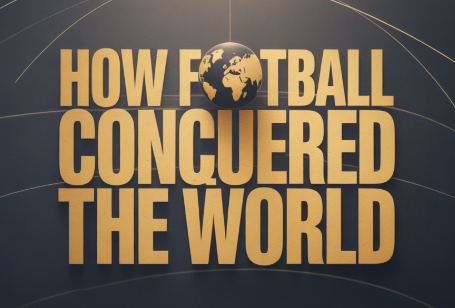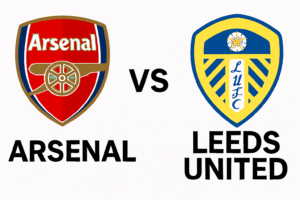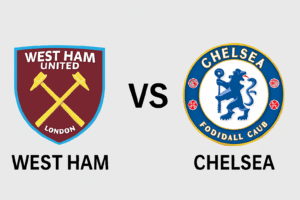
A Global Success Story
Football, as we know it today, has a long way since the early days of rough-and-tumble kicking games played in medieval Europe. In the 19th century, sport began to take its modern shape in Britain. In 1863, a major watershed moment for football occurred with the formation of the Football Association. This association set down a common and unified set of rules and initiated organized cup competitions. This would set the standard for an explosion of growth in the game of football. By the first decade of the 21st century, football had become more than a sport, it was a global phenomenon. FIFA estimated that about 250 million people played the game, with over 1.3 billion fans around the world, hence calling football ‘the world’s most popular ball game’. The enthusiasm for football in Europe was immediate follow-up action optimistically creating domestic leagues, clubs and national teams. Football would not just stay in Europe because of trade, travel and colonial links, it grew rapidly all over the globe, ultimately making it unstoppable for every aspiring player who was now developing moves and skills. Football’s simplicity made it truly unstoppable: all you needed was a ball, a goal of sorts, and a few mates. Football’s accessibility offered the cultural connection that connected people from all parts of the world. What began as a local cluttering of games had, by this time, developed into a beautiful game for millions of people.

Football and FIFA: Building a Global Community
Founded in 1904 by seven European associations, FIFA (Fédération Internationale de Football Association) was really a small effort to bring some order to a growing game. From those humble beginnings in Europe, FIFA has transcended to become one of the largest governing bodies, with 211 member countries, nearly as many as the United Nations. It shows how much football has taken root around the world.
The largest stage for FIFA is the FIFA World Cup, which had its initial kick off in Uruguay in 1930. Since then, the FIFA World Cup has flourished as a widely observed spectacle. The finished product of the 2010 FIFA World Cup had 26 billion viewers watch TV. In Korea in 2002 and more recently in Russia in 2018, the FIFA World Cup had a staggering 3.5 billion viewers tuned in! That’s nearly 40 % of the globe engaged in 1 event – not a bad sign for the worlds love affair with the game!
Football’s Explosive Growth Across Continents
In Africa, football is not simply a sport; it is part of everyday life. In Cameroon, Nigeria, and Ghana football culture is still unrealized. These three countries are not only producing superstar players but, more importantly, are providing us with moments to take pride in for billions of people around the world. There are plenty of vibrant local leagues and in the grassroots, there is a plethora of football being played, from playing fields in cities to dusty fields in villages. When the Africa Cup of Nations starts, it is not just a tournament, but a collective African movement with thousands of people attending. Television audiences are astronomical.
In Asia, football has been on the rise since the co-hosting of the 2002 World Cup by Japan and South Korea, which drove a massive wave of investment which is still ongoing. More countries, particularly China, India, and Indonesia, are investing in academies, building stadiums, and professional leagues, all with the hope of developing the next generation of superstars. The Asian Football Confederation has developed, and their teams are starting to be serious challengers at the world-stage.
And then there’s the United States a country where soccer used to be such a secondary sport, but that is now no longer true. Young people play soccer in increasing numbers, and Major League Soccer (MLS) is starting to find its legs, assisted by players from overseas and huge amounts of money. In the Americas, football is more than just a sport. It is a way of life lots of flair and flavor in Brazil, the passion of Argentina, and the commitment of Mexico. In many respects, football is life.
Football’s Stars: Icons Who Transcend Borders
Not every footballer simply plays the game; some truly transform it. Take the likes of Pelé, Diego Maradona, and Johan Cruyff each were not only brilliant players, but they were also bigger than football and changed how the world looked at football. They were much more than brilliant footballers, they were and are symbols of imagination, hope and creativity.
In many ways Lionel Messi and Cristiano Ronaldo have taken that mantle to even greater heights in terms of individual achievement, having not only accumulated countless Ballon d’Or trophies, but also goalscoring records, and legions of fans across the globe. Their rivalry became a storyline in and of itself for well over a decade of captivating millions and millions of fans and unused the narrative of two players and inspired a generation of Followers.
But they have plenty of company. Today, Neymar, Kylian Mbappé, Mohamed Salah, and Marta (notably the first woman to be included on this list), continue to push the game forward in immeasurable ways the game only one aspect of their impact. In the age of social media, the visibility of players is greater than ever, as a result players are turning into cultural icons. More importantly, they offer kids all around the world in the backstreets of Rio or small villages in India something to dream about.
Top Football Clubs and Their Global Influence
Soccer clubs are influential representatives of the game. Clubs like FC Barcelona, Real Madrid, Manchester United, Bayern Munich, etc. have fan bases in the hundreds of millions. They also market themselves globally and have multilingual platforms and travel the world to engage with fans.
Stadiums like Camp Nou and Old Trafford can hold upwards of 100,000 people and are places of pilgrimage. With huge crowds, the tour effect ripples as their success in the UEFA Champions League and various domestic competitions increases their exposure. Other clubs, such as Juventus, Paris Saint-Germain, and Boca Juniors are now recognizable on an international scale.
Why Football Conquered the World
The growth of the sport has been one of love and innocence, from the fi elds of Victorian Britain to the stadiums of Africa and Asia; all it took was a ball, a goal and some friends, and normally that was enough to enchant children (and even adults) everywhere. In 1863 the rules were formalized by The First Football Association in England. The game then took off truly – quickly into Europe, onto new continents, and every neglected corner of the Earth. By the early 2000s, there was more than a sport with more than 250 million players and 1.3 billion fans worldwide.
Football is now considered a universal language, made in cheers, goals, and hopes.
FIFA and World Cup Influence
FIFA, the Fédération Internationale de Football Association, was founded in 1904 by just seven European associations. What started as a small group ultimately became the sport’s governing body. with an expansive reach across the globe. The body which is now FIFA began to establish larger and more structured competitions run by clubs and national teams with the leadership of FIFA. The FIFA World Cup, which is run every four years, began in 1930 in Uruguay and is now one of the largest sporting events in the world. Today, FIFA has 211 different members which is nearly as many as the United Nations. That demonstrates how global sport and organization has become. Each of the major footballing nations has a dream to qualify for the World Cup, with the expo being considered a great national honor to host the event.
The FIFA World Cup has made great strides in the popularity of football. By the 21st century, millions of people across the globe were tuning in to the event, and billions of people grew to appreciate and enjoy football as a recreational activity. The tournament’s finals drew an estimated 26 billion combined TV viewers in 2010. In 2018, over 3.5 billion people watched the World Cup in Russia. It is estimated that 1.1 billion people watched the final match-only 1 out of 3 people saw their first ever World Cup Game. FIFA has claimed each World Cup Match is a worldwide television event, and they were correct; each match is a culmination of not only supporters, but also commercial advertisers and world leaders. The tournament trophy, first the Jules Rimet and currently the gold trophy, personifies football’s global influence and unity as a point of distinctively human behavior. The Fédération Internationale de Football Association (FIFA) began with seven European associations in 1904, now it governs the sport of football for well over 200 countries. Not only do the club competitions and national teams organize larger and more complicated forms of football, but FIFA also wants in on the competition. The FIFA World Cup has been staged every four years since 1930 when it was hosted in Uruguay, and it is the world’s most prestigious sporting competition. With 211 member countries, FIFA nearly matches the number of UN member states. This shows how far-reaching and entrenched globally this sport has become. All major footballing countries now aspire to qualify for the World Cup, which is celebrated by countries if they host the tournament.
The World Cup has reached innumerable popularity, thanks in large part to the reach of the tournament. By the beginning of the 21st century, billions of people were tuning in. The finals of the tournament in 2010 reached an estimated 26 billion combined TV viewers. In addition, more than 3.5 billion people watched the World Cup in Russia as part of the 2018 tournament. The number of viewers for the final match reached over 1.1 billion, with many viewers of the final match only watching part of the game. FIFA has consistently described every World Cup match as a global television event, and they were right to do so. Not only does the tournament and the individual matches reach millions if not billions of fans, it attracts significant investment by advertisers as well as consideration by world leaders. The tournament displayed both the trophy first known as the Jules Rimet and now the significant gold trophy as a testament to the global reach and unifying value of football.
Continental Growth (Africa, Asia, Americas)
Football’s growth is evident in every corner of the globe. In Africa, football is more than a sport – it is a way of life, and as stated by the BBC, it is the most popular sport on the continent. African nations celebrated headlines produced by Cameroon, Nigeria and Ghana at World Cups, and millions stand behind the African Cup of Nations and when you consider both the crowd sizes and massive viewership numbers across the continent, it is clear to see that football is at the heart of Africa. Domestic leagues participate in more players and fans in Egypt, South Africa and Ivory Coast, and grassroots programs are abundant in cities and villages across Africa. In Asia, players now have more opportunity to play and enjoy football than ever before, as evidenced by both Japan and South Korea co-hosting the 2002 World Cup and inspiring a new generation of Asian footballers. Countries like China and India, and Southeast Asian countries, are pouring money into football academies and clubs, while the AFC, (Asian Football Confederation) has professional footballers in World tournaments. Youth participation in soccer is quickly growing even in traditionally countries that do not consider football to be their game. The MLS has its successful fanfare, has enticed investment, and has been able to create interest in soccer in the USA. Football carries cultural identity across the Americas with Brazil’s flair, Argentina’s passion, Mexico’s pride, and now the emergence of an increased understanding in North America: football is a cultural tongue across a continent.
Naturally, with FIFA’s growth in terms of development programs, clubs and national teams in Africa, Asia, and the Americas are already connecting fans to the world game. Certainly, there is now recognition of football in Africa and Asia making a significant contribution to the history of football with players on Japan’s J-League or players like Ghana’s national team becoming international ambassadors for the game. Each continent also provides their own playing style, or diehard fans who connect their pride to their affiliation to the team while representing a truly global football body.
Top Players and Clubs
Some players don’t just play football; they represent it. Greats like Pelé, Maradona, and Cruyff inspired players for generations long before TikTok, and billion-dollar transfers and soon Messi and Ronaldo came along and changed the record books and hearts worldwide. Their names resonate, even with people who have never kicked a ball.
These global stars aren’t just famous. They are icons in the truest sense. Children everywhere aspire to reach the same heights as Messi and practice free kicks on dirt paths, gravel roadways, or city sidewalks. Players like Neymar, Mbappé, Salah, and Marta are also modern football icons, combining skill and global impact, in all areas, that the game represents.
As if that wasn’t enough, the biggest clubs add a mystical aspect to football Real Madrid, Barcelona, Manchester United, Bayern Munich, etc., have supporters that are so large an audience they are like entire continents. The stadiums are filled with tens of thousands of people, creating a highly unusual experience in sport. Matches hosted by these clubs, be they Champions League nights, or local derbies, are turned into global spectacles that fans will watch thousands of kilometers away. In the end, it’s this combination. The legends, the fans, the passion. It’s what makes football the game everything else aspires to be. From British school yards to African villages and Asian megacities, all it takes is a ball, a goal, and love of the game.




